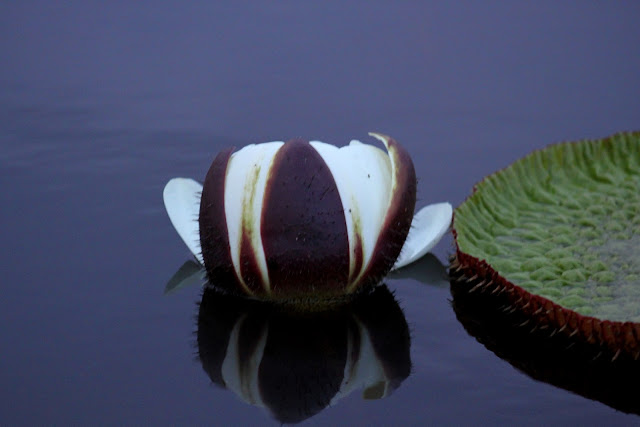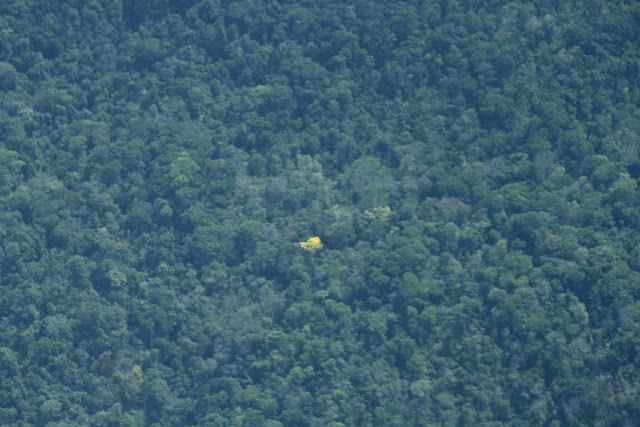Giant waterlilies, old jeeps, and terrific birding aside, the heart and soul of Karanambu is Diane McTurk. And, her heart and soul belong to her beloved Giant River Otters.
Diane (pronounced DEE-ann) spent her childhood at Karanambu, the cattle ranch established by her father, Tiny McTurk. As she related, she "ran naked in paradise". Like most British Colonial children of the time, she was sent to school in England. In the mid-1970s, she returned to Guyana full-time, took over Karanambu with the intent to earn enough money to keep the ranch operational by inviting tourists to come stay.
Shortly after, Diane began rescuing, raising and rehabilitating orphaned otters. Some have been released into their wild river habitat. The ones that were not have found excellent homes in zoos in the US and elsewhere.
These are the two 1 year olds, currently in residence. Visit Andrea & Salvadore's blog (link below) to read about the raising of these two cuties.
The Giant River Otter (Pteronura brasiliensis) is found only in the rivers and creeks of the Amazon, Orinoco and LaPlata river systems in South America. It is the world's largest otter reaching 1.8 m in length.
They have webbed feet and water-repellent fur. Their nostrils and ears close tightly when in the water.
They swim by flexing their long bodies and propelling with their tails.
Each animal eats 3-4 kg of food per day.
Sharp teeth! They like to bite toes.
This young fellow is one of the fishermen and caretakers of the otters. He's been out fishing for their supper.
The small reddish ones are Red-bellied Piranha. The larger are Butterfly Peacock Bass (Chichla orinocensis)
The Giant River Otters are highly endangered due to hunting and habitat loss. They are the rarest otters in the world, with only a few thousand left in the wild.
Diane McTurk - a very beautiful and inspiring woman.
The Karanambu Trust: http://www.karanambutrust.org/
Andrea & Salvadore's blog: http://theadventuresofandreasalvador.blogspot.com/
Dr. Lucy's blog: http://savingotters.wildlifedirect.org/
Otter facts from: http://animals.nationalgeographic.com/animals/mammals/giant-river-otter/
Diane (pronounced DEE-ann) spent her childhood at Karanambu, the cattle ranch established by her father, Tiny McTurk. As she related, she "ran naked in paradise". Like most British Colonial children of the time, she was sent to school in England. In the mid-1970s, she returned to Guyana full-time, took over Karanambu with the intent to earn enough money to keep the ranch operational by inviting tourists to come stay.
Shortly after, Diane began rescuing, raising and rehabilitating orphaned otters. Some have been released into their wild river habitat. The ones that were not have found excellent homes in zoos in the US and elsewhere.
These are the two 1 year olds, currently in residence. Visit Andrea & Salvadore's blog (link below) to read about the raising of these two cuties.
The Giant River Otter (Pteronura brasiliensis) is found only in the rivers and creeks of the Amazon, Orinoco and LaPlata river systems in South America. It is the world's largest otter reaching 1.8 m in length.
They have webbed feet and water-repellent fur. Their nostrils and ears close tightly when in the water.
They swim by flexing their long bodies and propelling with their tails.
Red-bellied Piranha. mmmmmm ummmmm good...
Sharp teeth! They like to bite toes.
This young fellow is one of the fishermen and caretakers of the otters. He's been out fishing for their supper.
The small reddish ones are Red-bellied Piranha. The larger are Butterfly Peacock Bass (Chichla orinocensis)
The Giant River Otters are highly endangered due to hunting and habitat loss. They are the rarest otters in the world, with only a few thousand left in the wild.
Diane McTurk - a very beautiful and inspiring woman.
The Karanambu Trust: http://www.karanambutrust.org/
Andrea & Salvadore's blog: http://theadventuresofandreasalvador.blogspot.com/
Dr. Lucy's blog: http://savingotters.wildlifedirect.org/
Otter facts from: http://animals.nationalgeographic.com/animals/mammals/giant-river-otter/



























































